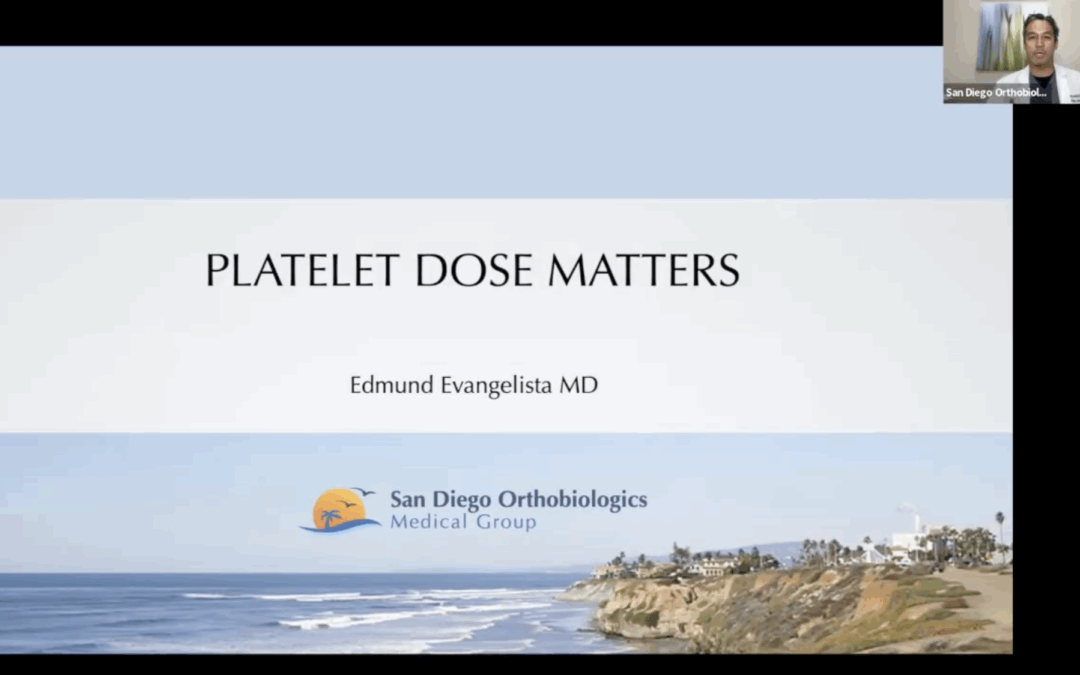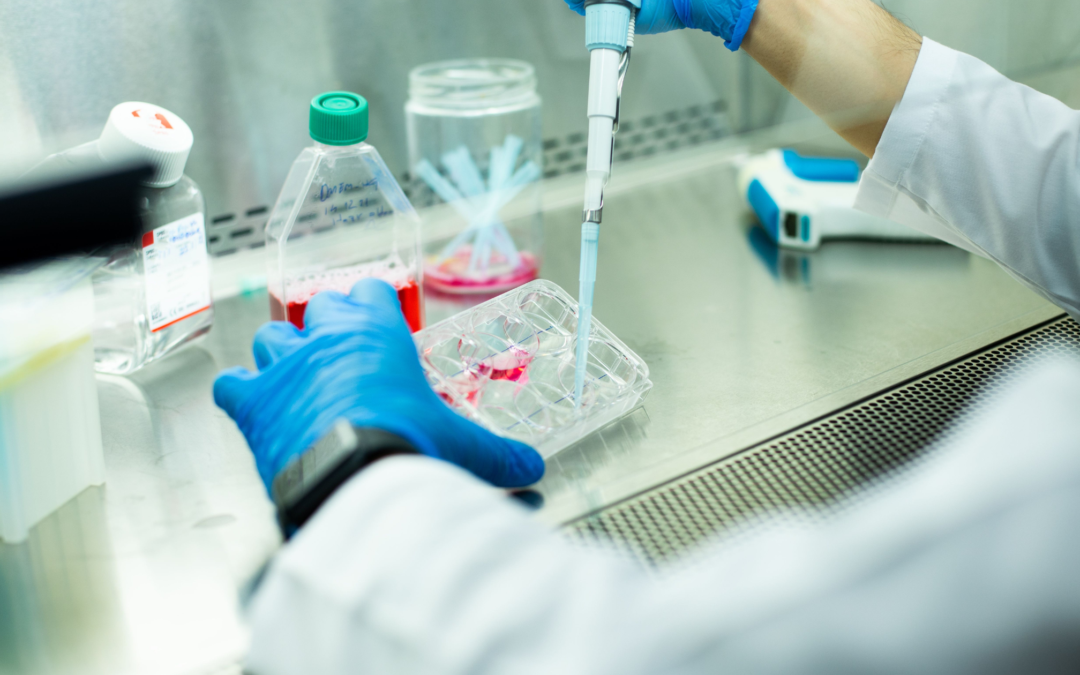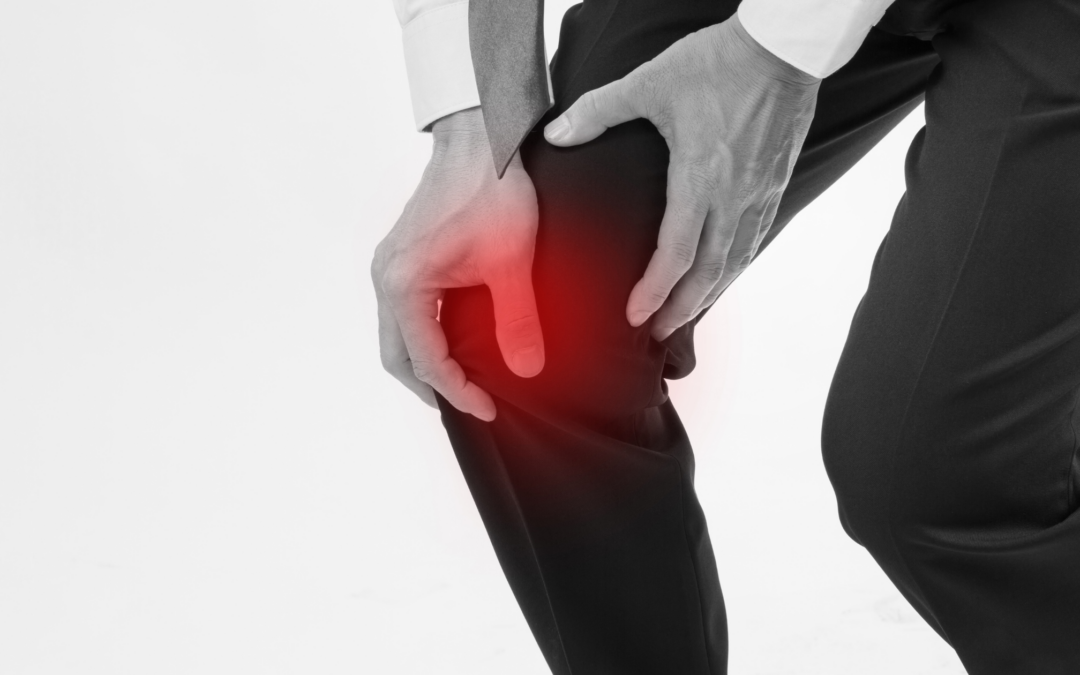
SDOMG Webinar: Platelet Dose Matters
In this webinar, Dr. Evangelista and Dr. Rogers discuss the latest clinical research regarding dosing with Platelet-Rich Plasma treatments.

In this webinar, Dr. Evangelista and Dr. Rogers discuss the latest clinical research regarding dosing with Platelet-Rich Plasma treatments.

Arthritis affects over 58 million adults in the United States alone, making it a leading cause of disability and pain. Traditionally, treatment options have focused on symptom management through medications, physical therapy, and, in severe cases, joint replacement surgery. However, recent advances in regenerative medicine are changing the landscape of arthritis care by offering promising, non-surgical alternatives that aim to repair and restore damaged tissues.
In this post, we’ll explore the latest regenerative medicine techniques used to treat arthritis, how they work, and why they’re generating excitement among physicians and patients alike.
Arthritis is not a single disease but a term that covers more than 100 different types of joint conditions. The most common forms are osteoarthritis (OA) and rheumatoid arthritis (RA):
Regardless of the type, arthritis often leads to joint pain, stiffness, decreased mobility, and a diminished quality of life.
Joint replacement surgery, while effective, comes with risks: infection, blood clots, lengthy recovery periods, and even the potential for implant failure over time. Many patients are not ready—or suitable candidates—for surgery and seek less invasive options to manage symptoms and improve joint function.
That’s where regenerative medicine steps in.
Regenerative medicine harnesses the body’s natural healing mechanisms to repair or replace damaged tissues, including cartilage, ligaments, tendons, and even bone. These treatments aim to not only reduce symptoms but also to slow or potentially reverse the progression of arthritis.
The most promising regenerative therapies for arthritis include:
Let’s break down each of these innovative techniques.
PRP therapy involves drawing a small amount of the patient’s blood, processing it to concentrate the platelets, and then injecting this platelet-rich plasma into the affected joint.
Platelets contain growth factors that help stimulate tissue regeneration and reduce inflammation. When injected into an arthritic joint, PRP can:
Studies have shown PRP can be more effective than corticosteroids or hyaluronic acid injections in relieving knee osteoarthritis symptoms. Results are typically seen within weeks and can last for several months or even over a year.
Stem cells are undifferentiated cells capable of transforming into various tissue types, including cartilage. In arthritis treatment, mesenchymal stem cells (MSCs) are commonly harvested from a patient’s bone marrow or adipose (fat) tissue and injected into the joint.
Once inside the joint, stem cells can:
Early studies have reported significant improvements in pain, mobility, and cartilage thickness following stem cell injections. While more research is needed to establish standardized protocols, the outlook is encouraging—especially for early to moderate osteoarthritis.
Prolotherapy is a regenerative injection technique that involves injecting a natural irritant—often a dextrose (sugar) solution—into the joint or surrounding ligaments and tendons.
The solution triggers a localized inflammatory response, prompting the body to send healing cells to the area. Over time, this can strengthen connective tissues and stabilize the joint.
Prolotherapy is particularly effective for patients with joint instability, ligament laxity, or early-stage arthritis. It’s less commonly used for severe osteoarthritis but can still play a role as part of a broader regenerative plan.
Benefits of Regenerative Medicine for Arthritis
Regenerative therapies work best in the early to moderate stages of arthritis. They may not be as effective for patients with advanced joint deterioration.
These treatments are often not covered by insurance and can range from a few hundred to several thousand dollars per session. However, many patients find the cost worthwhile for the benefits they experience.
It’s essential to seek care from physicians who specialize in regenerative medicine and follow best practices for safety, preparation, and delivery. Improper technique or unregulated products can result in complications.
Regenerative medicine is rapidly evolving. As research deepens and technology advances, these therapies may soon become mainstream components of arthritis care. Clinical trials are underway to determine long-term outcomes, best candidates, and optimal treatment protocols.
What’s exciting is that these approaches shift the paradigm from merely managing symptoms to actively promoting healing—a revolutionary step for the millions living with arthritis.
If you’re struggling with arthritis pain and looking for alternatives to surgery, regenerative medicine offers a promising path forward. From PRP to stem cells and beyond, these innovative techniques can help restore joint health, improve function, and reduce your reliance on medications.
Always consult a qualified healthcare professional to determine which therapy, if any, is right for you. With the right approach, living well with arthritis is not only possible—it’s becoming increasingly probable.
Interested in learning more about regenerative treatments? Talk to a regenerative medicine specialist or rheumatologist to explore your options based on your specific type of arthritis and stage of progression.

In recent years, medical science has made significant advancements in regenerative medicine, one of which is Lipogems. This innovative technique utilizes adipose (fat) tissue to harness the body’s natural healing properties. Lipogems stands out as a minimally invasive procedure that offers promising results for patients suffering from various musculoskeletal conditions. By employing the unique characteristics of adipose-derived stem cells, it aims to reduce inflammation and promote tissue repair.
The essence of Lipogems lies in its ability to extract and process adipose tissue, which is abundant in stem cells and growth factors. This procedure not only provides a source of regenerative cells but also offers a scaffold for tissue healing. As a result, it has garnered attention in the fields of orthopedics, sports medicine, and aesthetic treatments, making it a versatile option for many patients.
As more individuals seek alternatives to traditional surgical methods, the demand for therapies like Lipogems continues to rise. This article aims to delve into the science behind Lipogems, its procedural aspects, and the conditions it effectively treats, providing a comprehensive understanding of this revolutionary healing technique.
At the core of Lipogems therapy are adipose-derived stem cells (ADSCs). These cells are unique due to their ability to differentiate into various cell types, including bone, cartilage, and fat cells. This versatility makes them invaluable in regenerative medicine. Research has shown that ADSCs possess anti-inflammatory properties, which can significantly aid in the healing process.
Adipose tissue is rich in these stem cells, making it an excellent source for regenerative therapies. Unlike other sources, such as bone marrow, adipose tissue can be harvested easily and in larger quantities, providing a substantial number of stem cells for therapeutic use. Additionally, the processing of adipose tissue in Lipogems preserves the architecture and microenvironment necessary for stem cell function, enhancing their effectiveness.
Understanding the role of these stem cells is crucial for appreciating how Lipogems works. When injected into damaged tissues, ADSCs promote healing by stimulating the regeneration of damaged cells and reducing inflammation. This natural approach aligns with the body’s intrinsic healing mechanisms, offering a safer and often more effective alternative to conventional treatments.
The Lipogems procedure is designed to be efficient and minimally invasive. Here’s a step-by-step overview of how it works:
By understanding this step-by-step process, patients can appreciate the meticulous care involved in Lipogems, ensuring that they receive the best possible treatment tailored to their needs.
Lipogems technology has shown efficacy in treating a variety of conditions. Here are some of the most common applications:
The versatility of Lipogems makes it an attractive option for a range of conditions, allowing patients to explore alternatives to traditional treatment methodologies.
Patients considering Lipogems can expect a well-structured procedure that prioritizes comfort and safety. Here’s what to anticipate during the entire process:
Patients can feel reassured knowing that the Lipogems procedure is designed to be efficient, with a focus on achieving optimal results while ensuring their comfort throughout the process.
Understanding the recovery process is vital for patients undergoing Lipogems treatment. The timeline for recovery can vary based on the individual and the condition being treated. However, most patients can expect the following:
The regenerative capabilities of Lipogems can lead to significant improvements in pain relief and mobility, with many patients reporting enhanced quality of life post-treatment.
Determining eligibility for Lipogems treatment involves a careful evaluation by a qualified healthcare professional. Generally, good candidates include:
However, not everyone may be suitable for this treatment. Factors such as underlying health conditions, obesity, or the presence of infections may disqualify some individuals. A thorough consultation with a healthcare provider is essential to assess suitability and discuss potential risks and benefits.
As regenerative medicine continues to evolve, Lipogems emerges as a promising option for those seeking alternatives to traditional treatments. Its minimally invasive nature, coupled with the use of the body’s own healing mechanisms, presents patients with an opportunity for recovery without the risks associated with more invasive surgeries.
Considering the various conditions treated by Lipogems and the positive outcomes reported by many patients, it is worth exploring whether this innovative therapy aligns with their health needs. Consulting a knowledgeable healthcare provider can help individuals determine if Lipogems is the right choice for them and provide personalized insights into the potential benefits and expected results.
If you’re interested in learning more about Lipogems and how it can help you on your healing journey, reach out to a qualified physician today to explore your options.

Join us for an insightful webinar with Personalized Stem Cells and San Diego Orthobiologics Medical Group, featuring industry experts Bob Harman and Dr. Chris Rogers. Learn about the science of stem cells, the importance of stem cell banking, and treatment pathways available in the U.S. for stem cell therapies. Don’t miss this opportunity to explore how stem cells can be a part of your future health.
When: December 10, 2024
Time: 12:00pm PDT

We are pleased to announce that San Diego Orthobiologics Medical Group physicians, Dr. Christopher Rogers and Dr. Mary Ambach were first in the US to publish on the safety and efficacy of a GMP-manufactured stem cell product for patients with osteoarthritis. 1 This FDA / IRB approved study was sponsored by Personalized Stem Cells (PSC), a leader in stem cell research for orthopedic conditions. 2
Patients with moderate to severe knee osteoarthritis who had not responded to standard medical care were treated with PSC-01, an autologous, adipose-derived cell product, also known as stromal vascular fraction.
Stromal vascular fraction (SVF) is obtained from a patient’s own adipose tissue (fat) using a simple in-office procedure. Prior clinical trials outside the United States have shown that SVF therapy is safe and effective for knee osteoarthritis. In several clinical trials, adipose-derived cells have demonstrated a superior ability to reduce pain, improve function and promote cartilage regeneration than bone-marrow derived cells. 3, 4, 5
In this clinical trial, the treatment was shown to be safe, well-tolerated and effective. Most of the subjects had been advised to consider joint replacement surgery, however at one year follow-up, 79% were satisfied and able to avoid surgery altogether. In addition, a single treatment was shown to decrease pain, increase function and improve quality of life for up to 2.5 years.
Treatments that use a patient’s own cells represent an exciting advancement in the field of orthopedic regenerative medicine. SDOMG and PSC are committed to the responsible development of medical products that use a patient’s own cells to safely decrease pain and improve function. While SVF products require FDA approval, this treatment offers real hope to all patients who suffer with joint pain.
To learn more about your current treatment options for orthopedic conditions, please schedule a consultation with one of our physicians today:
San Diego Orthobiologics Medical Group
6125 Pasel Del Norte, Suite 100
Carlsbad, CA 92011
(760) 909-2355
REFERENCES

As one the largest joints in the body, the knees often suffer the most from the wear-and-tear that comes with a lifetime of use (or abuse). Whether damaged by an injury such as a ligament or tendon tear, or simply worn down by years of standing, running, jumping, lifting, etc., the result is often the same: chronic pain, inflammation, and reduced movement.
Depending on the extent of the injury or damage to the knee, patients can often gain some temporary relief from steroid injections that decrease swelling or from other interventional treatments such as hyaluronic acid injections that increase lubrication in the joint. But when these options have been expended, many look to surgery as their last, best hope to repair the damage and bring sought-after pain relief.
But now, non-surgical cellular treatments are providing long-term relief to patients with knee pain by putting the body’s own natural healing abilities to work to undo the damage brought on by injury or degeneration.
Known as regenerative medicine, cellular treatments harness powerful healing properties within the body’s building blocks—its own cells—to help repair and, in some cases, replace injured tissues. These treatments promote healing of injuries to the cartilage in the knee joint, as well as soft tissues such as tendons and ligaments in the knee.
To adhere to Federal Food and Drug Administration (FDA) guidelines, only autologous (from the patient’s own body) cellular products can be used to treat orthopedic conditions. Donor products, including cord or amniotic cells, are not approved to treat knee osteoarthritis or soft tissue injuries in the knee.
Cellular products are taken from the patient’s own blood, bone marrow, or fat (adipose) tissues to maximize the benefits of their unique healing properties:
After these products are removed from the patient, they are concentrated and reinjected directly to the injured area to address the degeneration or injury.
Regenerative medicine practitioners have scores of anecdotal evidence from satisfied patients that support the powerful pain-relieving and healing properties of cellular treatments for the knees.
But because the field of regenerative medicine is relatively new, until recently, there has been a limited amount of clinical data to bolster this anecdotal evidence. We believe the quantitative, controlled data that clinical trials will produce will not only further the use of cellular treatments for orthopedic conditions but will also confirm what hundreds of our satisfied patients have been telling us for years: cellular treatments have helped their bodies heal naturally while allowing them to resume the activities that help them regain their quality of life.
The experts at SDOMG help patients with knee injuries and knee osteoarthritis find the relief they need using expert technology and treatments. To learn more about cellular therapy for knee injuries, contact SDOMG using the form below.